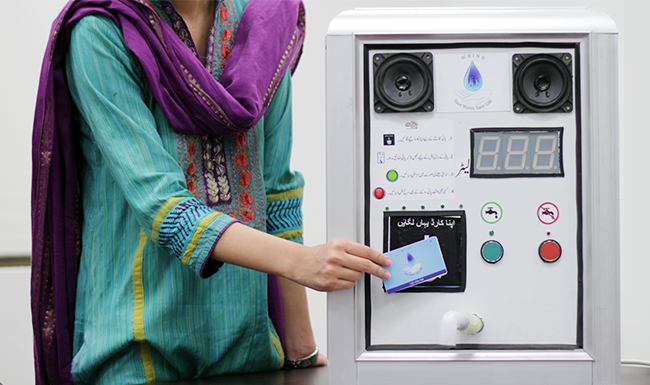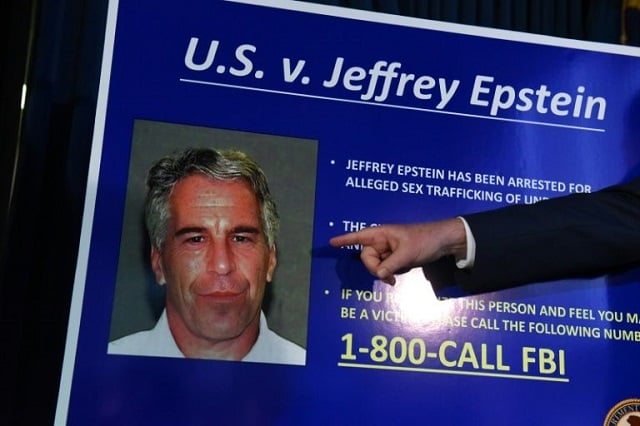
The two-foot-square prototype machine looks and functions like an ATM, but dispenses water instead of cash. Users are issued a card they can use to claim a daily share of water.
The project, a collaboration between the Punjab Saaf Pani (Clean Water) Company and the Innovations for Poverty Alleviation Lab (IPAL), a research centre in Lahore, aims to install a water ATM on each of a series of water filtration plants being established in rural and urban fringe areas of Punjab province.
The machine is designed to help the government cut water waste and ensure people have access to clean water, said Jawad Abbasi, a programme manager at IPAL.
"The innovative machines will help the government maintain a record of the exact quantity of clean drinking water being dispensed in a day in a specific locality, besides ensuring its quality," he said.
The quality and quantity of water being dispensed will be tracked in real time online, through a central server, he said.
How it works
The devices play an audio message upon authentication of a scanned card, after which they dispense water for the user. Green and red buttons enable the user to start and stop the flow of water.
A flow control meter manages how much water is dispensed, and sensors measure the amount of water still available.
In its first phase, the project will cover three districts of Punjab including Bahawalpur, Rajanpur and Faisalabad, all areas with particularly serious water contamination issues, experts said.
Each beneficiary family will be entitled to collect a maximum of 30 liters of clean drinking water daily from the filtration plants with their unique identity card, Abbasi said.
"We are planning to install the machines at 20 filtration plants in the first phase that will benefit some 17,500 families," he said.
He said that his organisation was seeking $23,500 in aid from the UK Department of International Development to put the prototype into production and install more of the dispensing machines at existing water filtration plants in Punjab.
Similar card-based water dispensing systems are already in use in neighbouring India.
Push to improve water access
According to Punjab Saaf Pani Company, only 13 percent people in rural areas have access to tap water, compared to 43 percent of people in urban areas of Punjab. The province, with 98 million people, is the country's most populous.
The government of Punjab aims to provide clean drinking water to over 35 million people by the middle of 2017 and some 20 billion rupees (almost $200 million) is being allocated for the effort in the upcoming budget, said Muhammad Farasat Iqbal, chief executive officer of Punjab Saaf Pani Company.
"It's one of the top priorities of the provincial government, to ensure provision of clean drinking water in each locality, as access to clean water is a fundamental human right," he said.
Iqbal said the clean water would be provided free of cost but beneficiary communities would pool money each month to pay for maintenance of the ATMs and filtration plants.
According to Pakistan's national drinking water policy, 35 percent of Pakistan's population doesn't have access to safe drinking water. The policy estimates that diseases related to water, sanitation and hygiene issues cost Pakistan's economy about 112 billion rupees ($1.1 billion) each year in health costs and lost earnings.
Nazir Ahmed Wattoo, an environmental expert with the Punjab Anjuman Samaji Behbood (Organisation for Social Welfare) said few water conservation systems are in place in Pakistan, resulting in waste both in daily use and in agriculture.
By regulating and measuring the water used daily in a specific area, he said, the government can better manage the scarce resource.
The real test, he said, will be whether the water dispensing centres are maintained and effectively monitored.
He said the centres also need to be supported by a concerted national effort to build new water reservoirs. Pakistan's water storage capacity is currently just 30 days, a quarter of what neighbouring India says is needed.























COMMENTS
Comments are moderated and generally will be posted if they are on-topic and not abusive.
For more information, please see our Comments FAQ